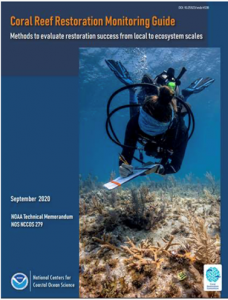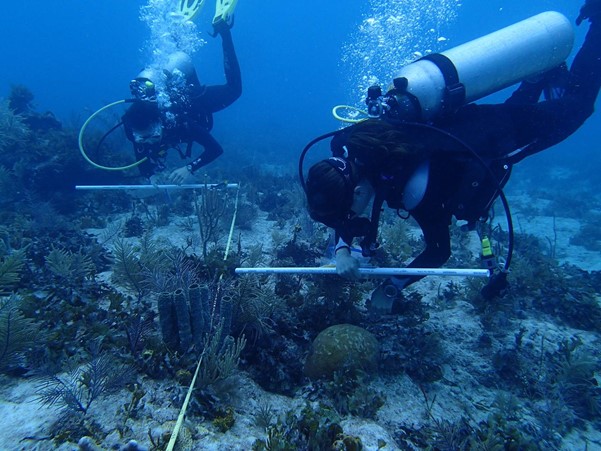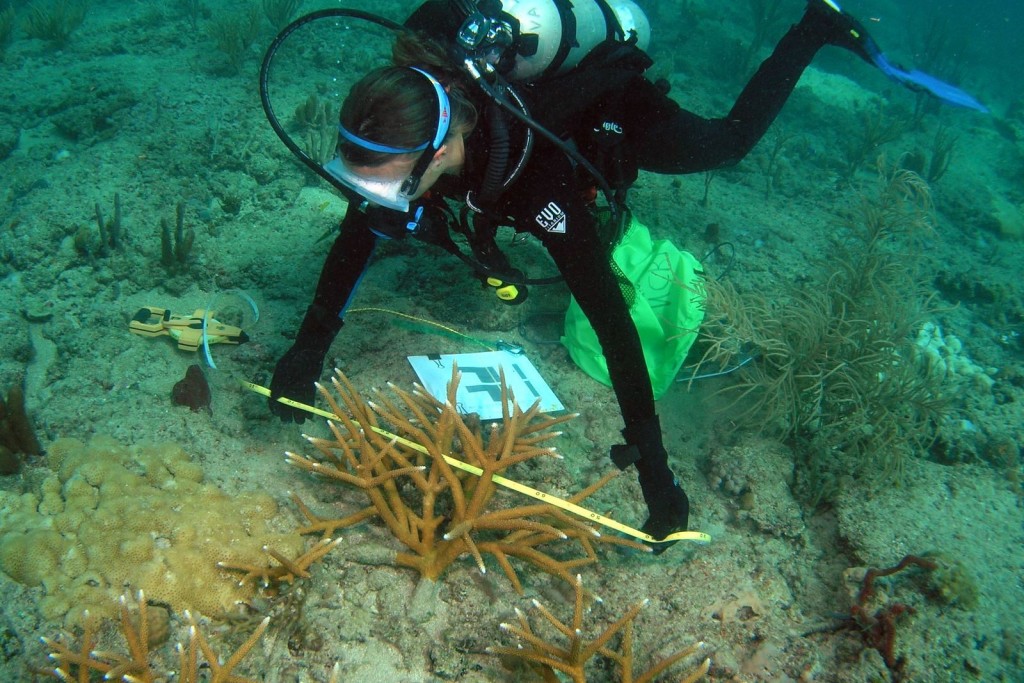Monitoring
Tracking and evaluating progress or success is one of the most important aspects of a restoration project. Regular monitoring allows us to identify if project objectives have been met and whether certain approaches and methodologies worked well or need to be improved. It also quantifies progress that can be communicated to stakeholder partners and can provide transparency during the process. It is also often required as part of the permitting process.
The Coral Reef Restoration Monitoring Guide
 The Coral Restoration Consortium (CRC) Monitoring Working Group recently developed the Coral Reef Restoration Monitoring Guide to provide comprehensive guidance for monitoring coral reef restoration efforts and evaluate progress towards restoration goals.
The Coral Restoration Consortium (CRC) Monitoring Working Group recently developed the Coral Reef Restoration Monitoring Guide to provide comprehensive guidance for monitoring coral reef restoration efforts and evaluate progress towards restoration goals.
The success of restoration ultimately depends on restoration goals and may therefore look different for each restoration project. As a result, metrics of success can be specific to coral colonies, related to broad coral reef function or even refer to socioeconomic parameters. There is no “one-size fits all” approach to defining and monitoring the success of coral reef restoration efforts. However, the lack of standardized approaches and metrics for monitoring has impeded the capacity to compare success across different programs and accurately inform the field of coral reef restoration.
To address that issue, the CRC Coral Reef Restoration Monitoring Guide presents two broad categories of metrics:
- The Universal Metrics which are suggested as the minimum set of metrics that should be monitored by all restoration projects, regardless of the project’s goal(s) or objectives.
- The Goal-Based Metrics which can be tailored to a specific goal.

Using 2-meter belt transects to monitor a reef in the Florida Keys, USA. Photo © Elizabeth Shaver
Beyond the choice of appropriate metrics, developing a monitoring plan for coral reef restoration also involves:
- Defining baseline data, control, and reference sites
- Choosing an appropriate sampling design (e.g., random versus fixed)
- Carefully considering monitoring timeframes as metrics and sampling design will evolve
Monitoring Methods
Methods for monitoring coral reef restoration efforts are adapted from traditional reef survey methods. Typically, these include:
- Colony-based data (e.g., in-situ tracing, mosaics, genetic sampling, coral fate-tracking)
- Environmental data (e.g., in-situ loggers, open access data sources, dive computer/thermometer)
- Ecological data (e.g., transects, quadrats, roving diver surveys)
- Socio-economic data (e.g., online surveys, in-person interviews)

Diver monitoring Acropora cervicornis donor colony. Photo © Elizabeth Goergen, NOVA Southeastern University
